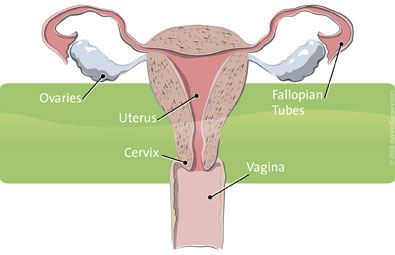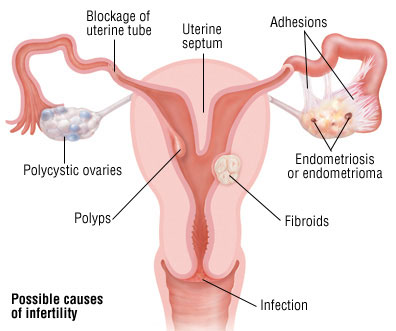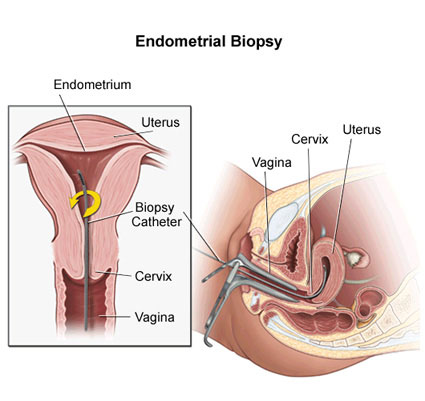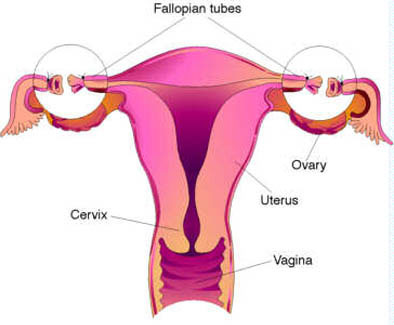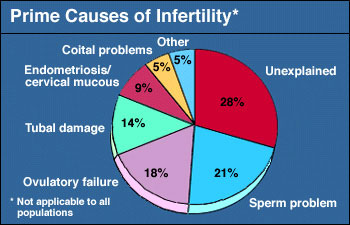Endometriosis is abnormal growth of tissues lining the uterus. In this medical condition, these tissues grow outside the uterus. Read on to find more about endometriosis and its medical treatment.Endometriosis is a medical condition in females in which the tissue that form the lining of the uterus grows outside it. This abnormal growth of tissues lining the uterus may not only grow outside it but also grow in the other parts of the body in some exceptional cases. These tissues may grow abnormally covering the uterus, fallopian tubes and ovaries.
Endometriosis is also one of the common
causes of infertility in women. Many times this condition is diagnosed while women are undergoing
treatment for infertility. In other cases, when symptoms are observed, doctors may ask to undergo an ultrasound to diagnose the condition. Discussed below are the common symptoms, treatments, side effects of the treatment and other issues related endometriosis.
What are the symptoms of endometriosis?
One-fourth of the women coping with endometriosis may not experience any symptom. Let us take a look at some of its common symptoms.
- Severe pelvic pain during menstruation
- Heavy bleeding
- Pain while having sex
- Pain while passing stools and while urinating
How is endometriosis treated medically?
The medical treatment of
endometriosis is also known as menstrual suppression therapy. It works on the principle that if periods are stopped completely for several months, the endometriosis will regress and symptoms will diminish. The drawback of this approach is that the treatment takes 6-9 months during which time a pregnancy cannot occur. Furthermore, there is no guarantee that the endometriosis will have disappeared.
What are the side effects of this treatment?
The most commonly used drug in the medical treatment of endometriosis is danazol. However, most women who take danazol experience side effects. Side effects include weight gain, reduction in breast size, oily skin and deepening of the voice. Medical researchers are trying to come out with alternative drugs that have fewer or no side effects.
How is endometriosis treated with the help of surgery?
If it is not possible to treat endometriosis medically, it is treated surgically. Surgery is performed to remove the scar tissues and endometrial growth. This procedure is performed with the help of laparoscopy by making a small incision. More incisions can also be done if required. Laparoscopy may prove beneficial for getting relief from the symptoms as well as improve the
chances of conception.
If the patient does not want to plan pregnancy in future, uterus and ovaries are removed through surgery to treat this condition when problem is chronic. In this case the woman may not get periods and experience early menopause.
What are the side effects of surgery?
Surgery may give rise to side effects in very rare cases. The complications like pelvic infection may be experienced due to surgery. Other complications like excessive bleeding, formation of scar tissue, damage to the other organs like ureters, bladder and bowel can arise due to surgery.
As the causes of endometriosis are not exactly known, it is very difficult to determine the preventive measures. But it has been observed that the use of combination oral contraceptive pills may help to reduce the risk. Following a healthy lifestyle is also one of the ways in which this disorder can be prevented. Exercising regularly or following a particular fitness regimen may help to prevent this condition. Avoiding alcoholic drinks may also help.
Women who have family history of endometriosis are at more risk of developing this condition. Daughters and sisters of the women coping with endometriosis are at risk of coping with this condition.












